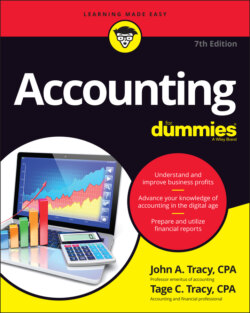Читать книгу Accounting For Dummies - John A. Tracy - Страница 57
Following the rules and bending the rules
ОглавлениеAn often-repeated story concerns three persons interviewing for an important accounting position. They’re asked one key question: “What’s 2 plus 2?” The first candidate answers, “It’s 4,” and is told, “Don’t call us. We’ll call you.” The second candidate answers, “Well, most of the time the answer is 4, but sometimes it’s 3, and sometimes it’s 5.” The third candidate answers, “What do you want the answer to be?” Guess who gets the job. This story exaggerates, of course, but it does have an element of truth.
The point is that interpreting GAAP is not cut-and-dried. Many accounting standards leave lots of wiggle room for interpretation. Guidelines would be a better word to describe many accounting rules. Deciding how to account for certain transactions and situations requires seasoned judgment and careful analysis of the rules. Furthermore, many estimates have to be made. Deciding on accounting methods requires, above all else, good faith.
A business may resort to “creative” accounting to make profit for the period look better or to make its year-to-year profit less erratic than it really is (which is called income smoothing). Like lawyers who know where to find loopholes, accountants can come up with inventive interpretations that stay within the boundaries of GAAP. We warn you about these creative accounting techniques — also called massaging the numbers — at various points in this book. Massaging the numbers can get out of hand and become accounting fraud, also called cooking the books. Massaging the numbers has some basis in honest differences for interpreting the facts. Cooking the books goes way beyond interpreting facts; this fraud consists of inventing facts and good old-fashioned chicanery.
